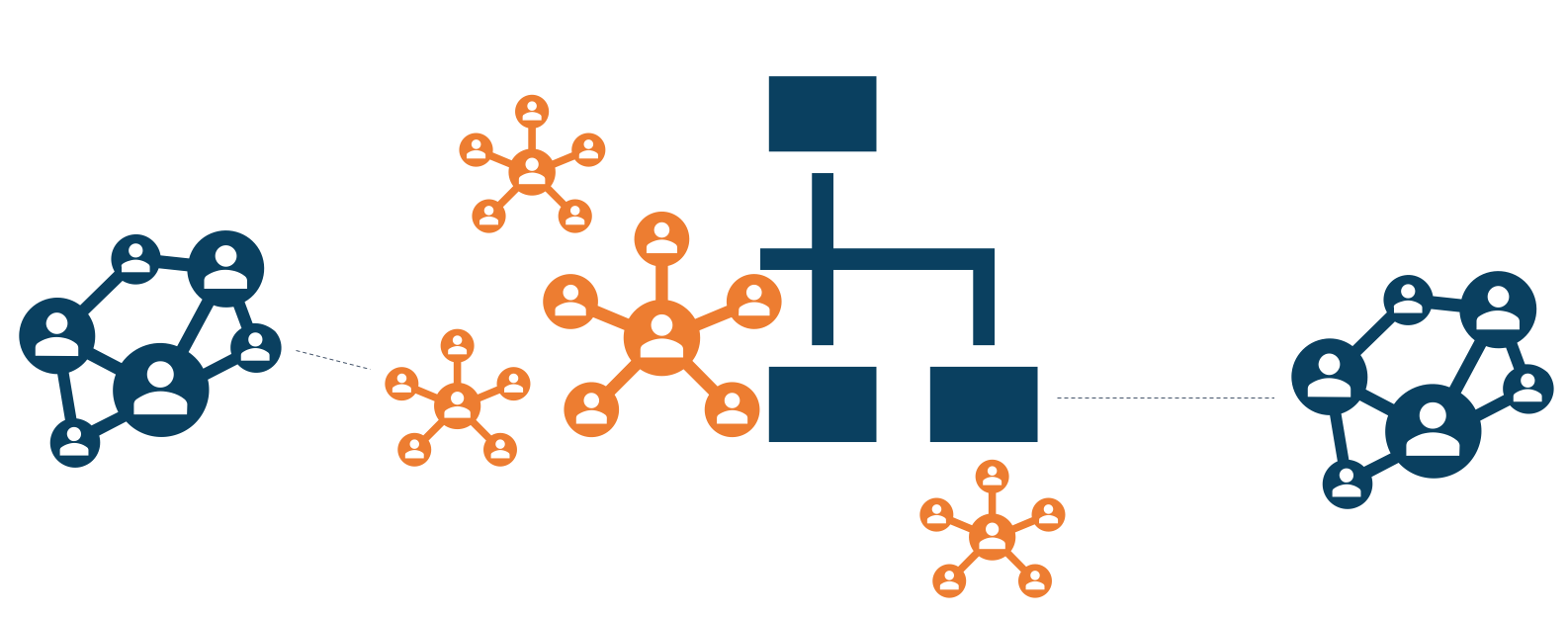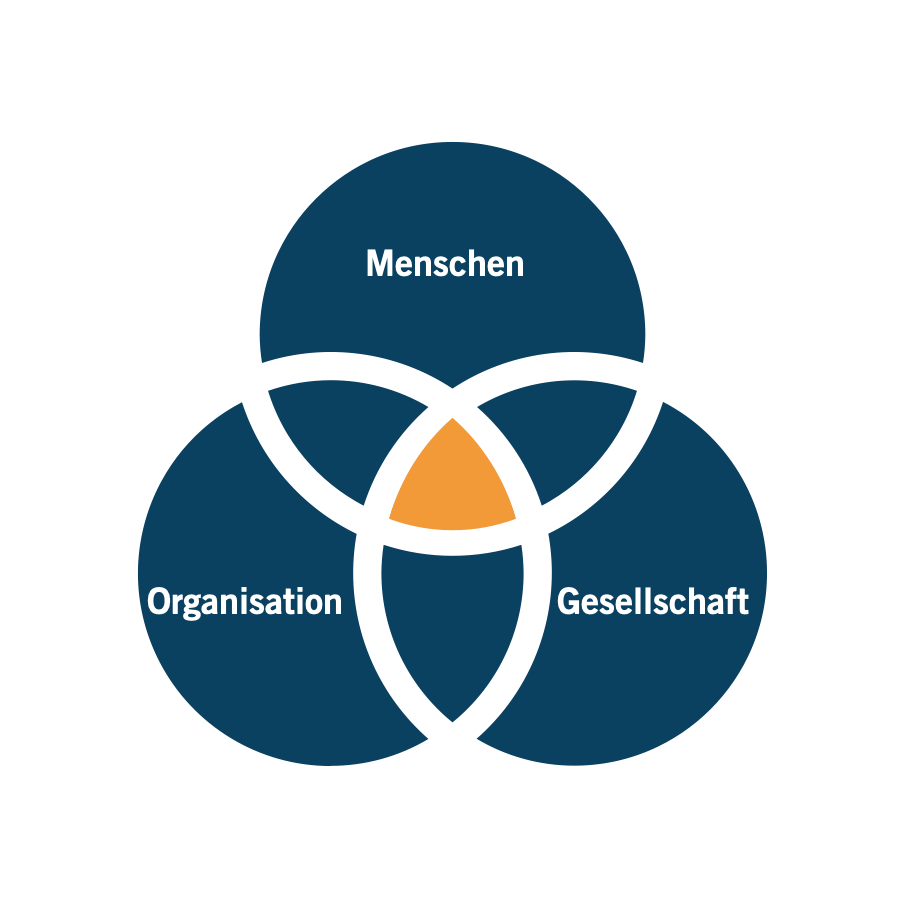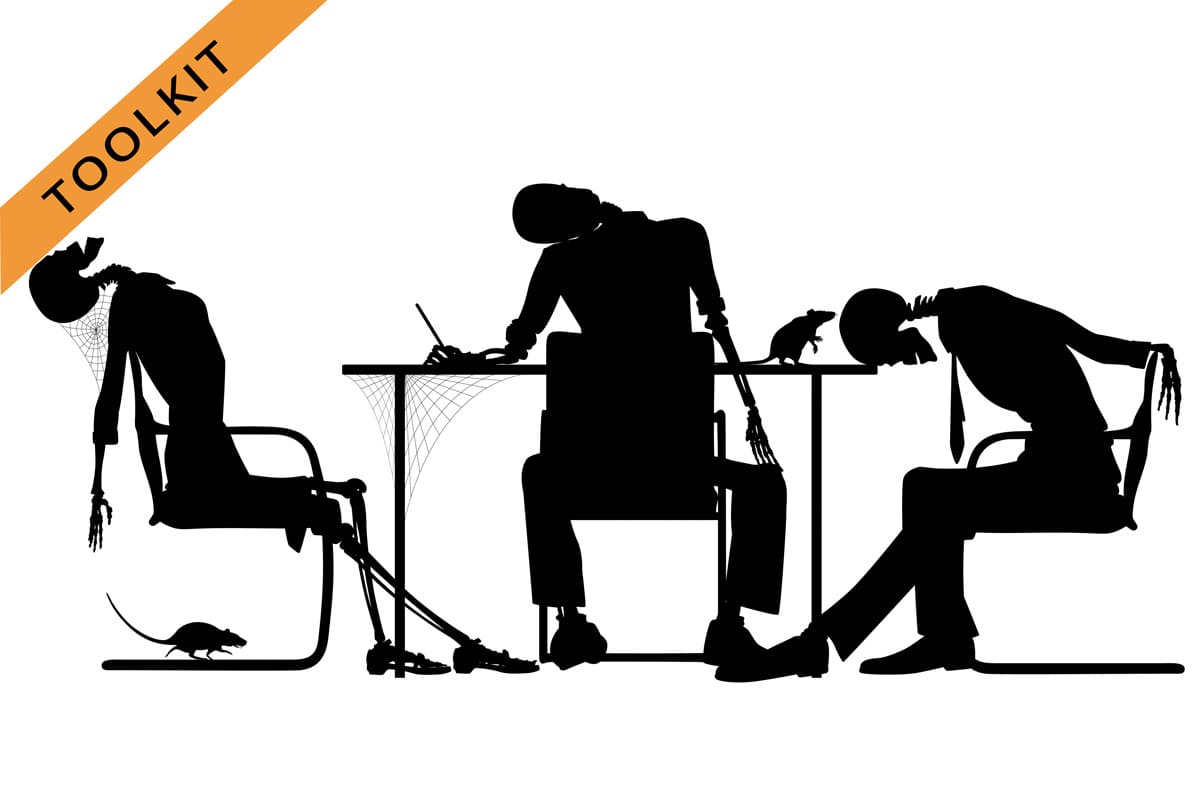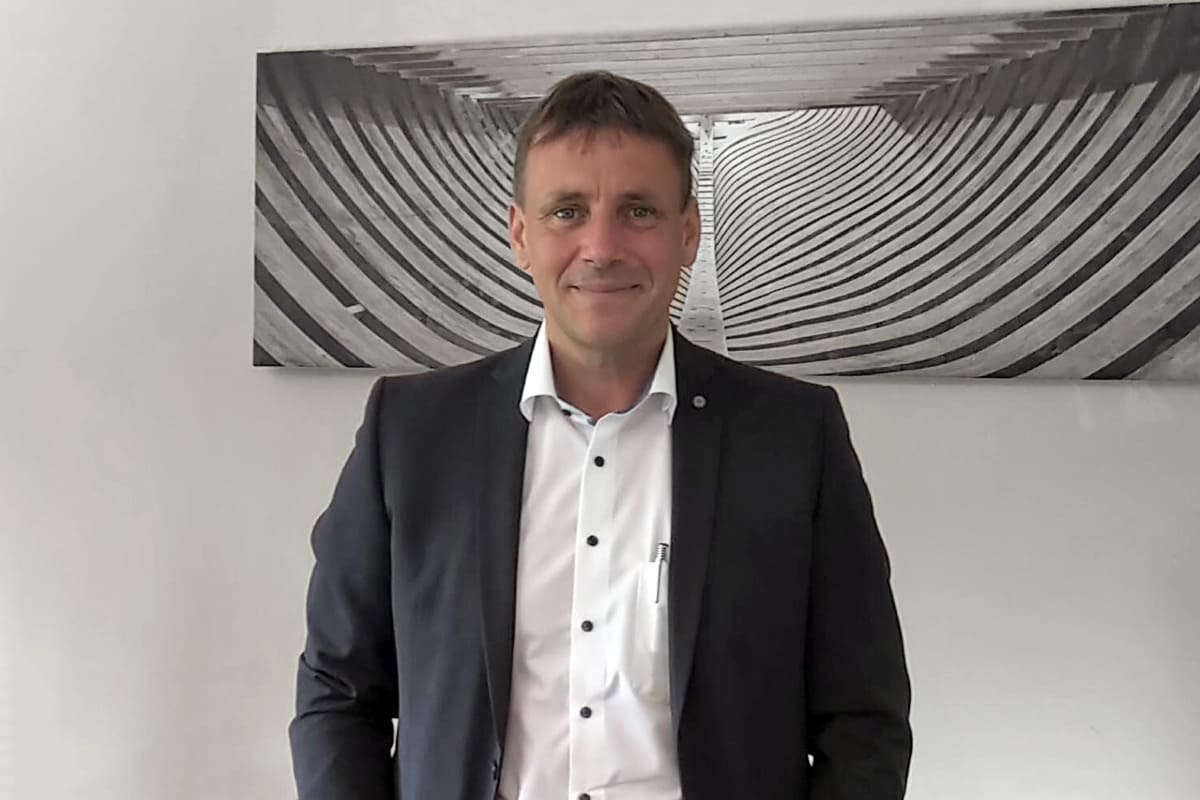Organisational development
Organic structures - a prerequisite for lasting competitiveness
From Sabine Walter, Head of netzwerk managementberatung | coaching
Structures are essential for every company - no matter how small, how large, whether traditional or hip. No matter how many employees and no matter what management style is tried out or practised. The art is to create and change structures in such a way that they serve the people in the company and the achievement of goals. This implies that these structures are only ever defined for a certain period of time and must be continuously questioned. Why are such so-called organic structures a prerequisite for lasting competitiveness? And how can they be created? You will find ideas on this in this article.
If you look up the word "structure" in the dictionary, the following definition appears:
- Arrangement of the parts of a whole in relation to each other;
- Structure consisting of parts that are mutually dependent on each other
So creating structures is about putting the different elements of a system that interact with each other in an order and, I add, in such an order that interaction is possible continuously and takes place without friction losses.
What exactly does this mean for companies?
Anything goes! Possible forms of organisation.
There are many ways in which companies are organised. Here are three examples:
Hierarchical structure
Hierarchical organisations are still widespread. Decision-making levels are clearly separated from each other. The Disadvantage of this separation often lies in long decision-making processes and a decreasing or Low level of responsibility by the individual employee. Decision-makers become "bottle necks" the individual's scope for action is decreasing and the Reaction speed to changing framework conditions sinks significant. As a rule, the emotional employee loyalty and the innovative strength of lower.
These disadvantages make it clear that a purely hierarchical organisation is no longer in keeping with the times.
Companies that are still organised purely hierarchically urgently need to herald organisational change in order not to go under.

Self-organised teams
The most prominent promoter of self-organised teams is certainly the Belgian Frédéric Laloux (Reinventing Organizations). The approach behind this is simple: "Give the decision-making power to the teams within the framework of a clear goal." The advantages are: Every in the organisation can shape and thus be effective itself. Entrepreneurial thinking and action is encouraged. Friction losses become smallerprovided there is clarity of purpose and the Cooperation in the team characterised by trust is. Furthermore, the team must have a high decision-making competence be present. Problems are solved where they arise. The Reaction speed increases.
Self-organised teams also only function when they are integrated into a structural framework and certain cornerstones are defined. Also in this form of organisation it needs leadership.

Free network
The free network, as we have been living it for more than 15 years, for example, usually has the goal, Combine different expertise, to achieve a common goal.
Everyone remains an expert in his or her field and continues to develop there as well. New things emerge from the interaction of the various experts or companies. The whole is usually more than the sum of its parts.
Depending on the network partner, the entrepreneurial competence strongly pronounced.
Free networks can exist over a long period of time or be formed, rebuilt and dissolved on a project-by-project basis.
In the future, free networks as an organisational structure will have a even greater role play. But they too need structures. And they too must be guided.

In many companies, a combination of these three forms certainly makes sense:

Which form of organisation suits us?
In general, it can be said that the Competitiveness of companies in the future will depend even more than before on the Innovative strength, speed of innovation and efficiency and depends on. A company can only build up this expertise and retain it in the long term if entrepreneurial thinking and action, lateral thinking, continuous development, transfer thinking and the ability to cooperate are part of the entrepreneurial DNA, i.e. many people who work in and with the company, have these competences and bring them into their work. On the other hand structures are needed that enable work without friction losses.
Each organisational form that a company defines for itself should therefore promote the core elements of competitiveness. But again, there is no one organisational form that fits. The point is, find the organisational form that fits the company, its goal and the people working to achieve it. Three questions help here:
- What form of organisation do we need so that the people who are working to achieve our mission can Like to bring in talents and her Developing potential in the best possible way?
- Which Processes we need to work with As little friction loss as possible to fulfil our mission?
- Which structures promote a high level of innovation competence, a permanent learning culture, a pronounced culture of trust, maximum accountability as well as entrepreneurial thinking and action on a broad level?
The third question in particular safeguards the approach of organic structures, if it is asked regularly and established organisational forms are thus continuously questioned and put to the test.
What structural elements do these forms of organisation need in order to be self-effective?
Regardless of which organisational form companies choose, clarity of purpose is an absolute must in any organisational form. And this clarity of purpose refers to three areas:

- Society:
- What do we want to achieve as a company? (Mission)
- What contribution do we want to make to society?
- People:
- Who do we need to succeed in this? (no matter whether you are a permanent employee or a freelance network, cooperation or business partner)
- Organisation / Structure:
- How do we ensure that we work permanently with expertise, commitment and full accountability to achieve our mission?
- How do we manage to be productive and add value in the long term?
The answers to these three questions form the target picture. Processes are derived from this. What structures are still needed? Structures that
- Promote and maintain trust
- Strengthening the decision-making capacity of the individual
- Enable development
- Create creativity
These structures include:
- Clear decision-making processesWho is allowed to decide what and how does the decision-making process work?
- Clear communication channelsWhat information is provided and accessed, and by what means? How do we communicate with each other so that everyone can express themselves and be heard?
- Clear Ways of Conflict communication and clarification
- Learning and creativity spaces, play and experimentation rooms
It needs processes of onboarding and separation. Especially when working in flexible structures where, for example, cooperation partners or team members change frequently, these two processes or rather cultures, i.e. the culture of integration and the culture of separation, are essential for high productivity in a trusting cooperation.
And it takes in every form of organisation has a leadership culture, whose self-image is to inspire people for the common mission and to give them the space to develop and thus make a self-effective contribution to fulfilling the mission. Who leads is irrelevant. Ideally, every individual in the company is able to lead with this self-image.
The Understanding leadership is the key to lasting competitiveness, as leadership at eye level, committed to achieving the mission, never runs the risk of falling into rigid structures. Nevertheless, it must be clear that leadership, organisation and structures are necessary in order to exist and be successful as a company in the long term. This is also and especially true for start-ups. Many of them negate this for too long and then go through considerable growing pains to the detriment of competitiveness.
Conclusion: Organic structures are a key prerequisite for competitiveness
Every successful company needs leadership and structures. It is important that the organisation with its processes, structures and systems serves the people who work in and with it. Only then is it possible to realise the company's mission with only minimal frictional losses.
Organisational forms and their elements must therefore remain organic and be continuously questioned. This can be achieved with a Understanding leadership at eye level that puts the mission and the people who work on it at the centre.



